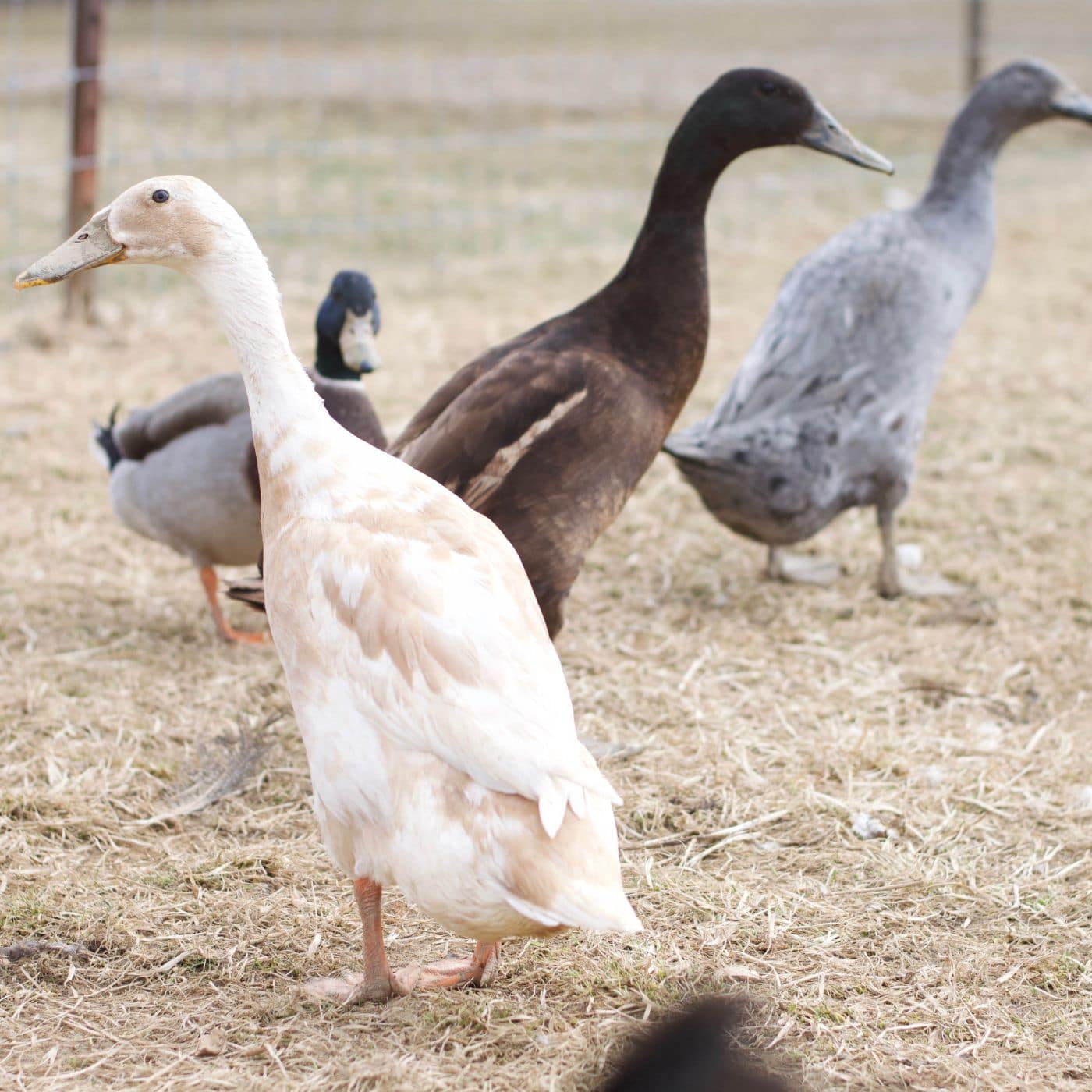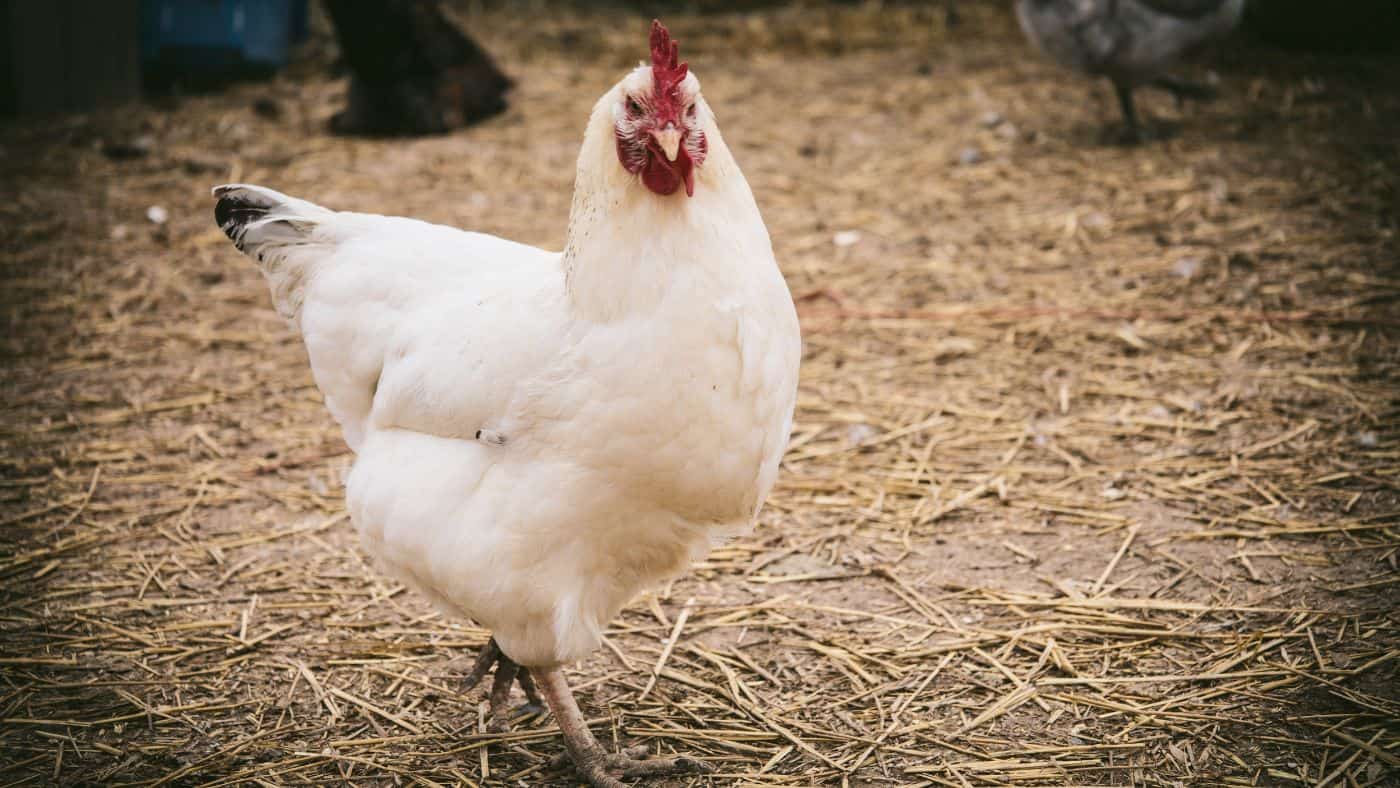Silver Appleyard ducks are a beautiful duck breed raised for egg production, meat, and exhibition. Known for their foraging capabilities and friendly disposition, they're an excellent addition to your backyard flock.

We love raising ducks often preferring them to raising chickens. We've raised a multitude of duck breeds over the years, but our favorite and the one we eventually settled on to exclusively raise was the beautiful silver Appleyard duck.
When choosing a duck breed we wanted something productive, friendly, heritage breed, and beautiful. While we have raised plenty of American Pekin for meat and eggs, Indian runner ducks for their fun antics and production capabilities, and even Cayuga ducks for their fun egg colors silver Appleyard ducks won our hearts.
What Are Silver Appleyard Ducks?

These colorful, heavy weight ducks were developed by Reginald Appleyard in the 1930s at his famous Priory Waterfowl farm in Suffolk, England.
They have beautiful beautiful, colorful plumage that makes them beautifully ornamental birds. However, they also grow quickly drakes to around 9 pounds and ducks to approximately 8 pounds and lay around 220 to 265 white eggs per year.
Alongside the Saxony, silver Appleyard ducks are considered the most active foragers of the heavyweight breeds. As long as they're well fed, they'll stay close to home and if allowed to forage, they won't require much outside feed when vegetation is growing.
Brought to the United States in the 1960s, they were finally available to the public in 1984 and were just accepted into the American Poultry Association Standard of Perfection in 2000.
Pros and Cons of Silver Appleyard Ducks
There aren't many cons to these beautiful ducks and the pros far outweigh the few there are, but you can decide for yourself.
Pros of Silver Appleyard Ducks
- Fast-growing, they produce large bodies of lean, flavorful meat.
- They lay an amazing amount of large eggs several months out of the year
- They're beautiful, friendly waterfowl that provide a lot of friendly, fun antics on your homestead
- A heavier breed, silver Appleyard ducks cannot fly and tend to stick around if well-fed
- Heritage breed with a conservation status of "watch" on the Livestock Conservancy
- Healthy and hardy, the silver Appleyard duck can deal with cold temperatures
- Good mothers
Cons of Silver Appleyard Ducks
- The ducks can be quite loud (the drakes are fairly quiet)
- Hard to find local, reputable breeders
- Their size can make them more expensive to feed, especially if you don't have forage available
- Like all duck breeds, they can make mud puddles with their bills and can be quite messy in wet conditions
Silver Appleyard Duck Characteristics
When Reginald Appleyard developed the breed he desired "a combination of beauty, size, lots of big white eggs, and deep, long, wide breast." And that's what he developed
Silver Appleyard ducks are large, and stocky with a slightly erect posture. They have coloring similar to a mallard, or Rouen duck except for two dominant restricted genes and two recessive light genes.
Drakes can reach up to 9 pounds while ducks get to approximately 8 pounds at full size. They have prominent breasts and combined with their size make an excellent table bird.
They have dark brown eyes and a slightly erect body with legs that are set slightly back and well apart.

The drakes have a yellow or greenish bill with a black tip. The head and neck are green in color and the breast, shoulders, sides, and flank are red chestnut with white lacing. The underbody is cream and the wings are gray and white with a beautiful bright blue stripe. The tail is bronze and the legs and feet are orange.

The duck's bill is yellow or orange with a black tip. All of her plumage is typically white with buff, brown, fawn, and grey markings. She will also have a blue stripe on the wings and orange legs and feet.
Breed Name: Silver Appleyard
Breed Type: Meat, Eggs, Exhibition, Ornamental
Size: Drake 9 lbs Duck 8 lbs
Temperament: Calm, Docile, Friendly
Eggs Per Year: 220-265
Egg Size: Large to Extra Large
Egg Color: White
Lifespan: 4-8 Years
Time to Maturity: 8-10 Weeks (meat) 6-7 Months (eggs)
Temperament
Again, these ducks are excellent foragers, friendly, and docile. As long as they're well-fed they will stay close to home making them an excellent addition to a smaller homestead.
The ducks, like all domesticated duck breeds, can be a bit loud. Female ducks have a true quack and can be boisterous at times. Drakes, on the other hand, have a raspy noise that barely resembles a true quack making them quiet... the exact opposite of a chicken.
This breed isn't flighty, in fact being a heavyweight breed they can't take flight at all. It is said that they handle confinement well as long as they have access to roam occasionally. Personally, I don't confine my waterfowl at all, giving them the option to free range.
While they can handle confinement, silver Appleyard ducks will do best when given the opportunity to explore their surroundings. They love to search for snacks in the weeds decreasing your feed bill. However, if you do not have adequate forage, their large size can be costly.
This beautiful breed of duck is very friendly and docile. When it is hot, however, they typically prefer to be left alone without much human interaction. It took a while for our flock to warm up to us, but once they did they would come up to us regularly.
Silver Appleyard Duck Breed Hardiness

This farmyard duck is very hardy and can handle most weather conditions, including thriving in colder climates.
Unlike chickens, caring for ducks in winter is pretty simple and this breed is no exception. They just need a place to get out of the wind.
Silver Appleyards can also handle hot temperatures. They cool down by panting and love to swim or play in the water on hot days. We have pools around our property for them to hop in and cool off.
Egg Production
Silver Appleyard ducks lay well beginning around 6 to 7 months of age. They are considered the best egg layers among all the heavyweight breeds.
They lay large to extra large white eggs several times a week somewhere between 220 and 265 eggs per year. Like most domestic duck breeds, they lay year-round, even in colder months, fairly regularly.
Laying capabilities will directly correlate with health, diet, and overall care, but they're pretty healthy and hardy. As long as they have adequate forage and a good waterfowl feed they'll do just fine.
Meat
These heavyweight ducks are great for meat and can be butchered as early as 8 weeks. This breed produces a gourmet roasting duck and is known for its flavor and lean meat, making it an excellent choice for meat production.
Typically, by 9 weeks of age, these ducks will weigh a healthy 6.5 to 7 pounds, so like other meat duck breeds, they have a quick growth rate.
Broodiness
Broodiness is a trait that was retained in the silver Appleyard duck. The ducks often go broody and will easily incubate a clutch of eggs.

They're devoted mothers who will happily sit in the nest all day and easily raise their own ducklings. Some people say it takes about two years for ducks to go broody, but we found our flock went broody at a year, the first spring after hatching.
Silver Appleyard ducklings are beautiful and fun to have around. Very hardy, the ducklings we ordered from the hatchery all survived into adulthood.
More Duck Posts to Check Out:
- 12 Things You Need to Know About Caring for Ducklings
- Caring for Ducks in Winter
- What Do Ducks Eat? Your Guide to Feeding Ducks
Silver Appleyard ducks are a great addition to your homestead, if you raise them, I'd love to hear about it in the comment section below! Be sure to follow me on Facebook and Pinterest for more inspiration for raising your own flock of ducks.






Dorne says
Hi I have three appleyards two ducks and one drake which someone found, which I took in oh what joy. I've heard that don't fly being a heavy weight breed? But mine do fly what do I need to do to stop them flying away.They are so funny to watch and are very friendly, I used to keep the smaller call ducks but these are so much more fun to have around.
Helen says
I “rescued” 2 adult drakes and 12 laying adult ducks in 2013, and two of them, both Silver Appleyard Ducks, are still going strong, occasionally laying eggs. So, they must be at least 11, maybe 12 years old now.
Eve says
We have 6 golden 300 layer ducks, 2 jumbo pekins and got 5 silver Appleyards this year but I call them silver assholeyards because they kinda bully our other ducks even though they’re young (12 weeks) and the new kids on the block. Sorry but it’s true.
Also they don’t seem as big as I expected. I picked a hen up today she is definitely nowhere near 8 pounds! Maybe 5 maximum. They always have access to feed and water and were fed waterfowl grower feed - organic - for the correct amount of time. Other than them not being as big as expected, they’re healthy, beautiful, bold and have attitudes. I didn’t expect that. We ordered them as day olds from Metzger but will hatch our own moving forward. If they’re good mothers as everyone says, we won’t have to use the incubator.